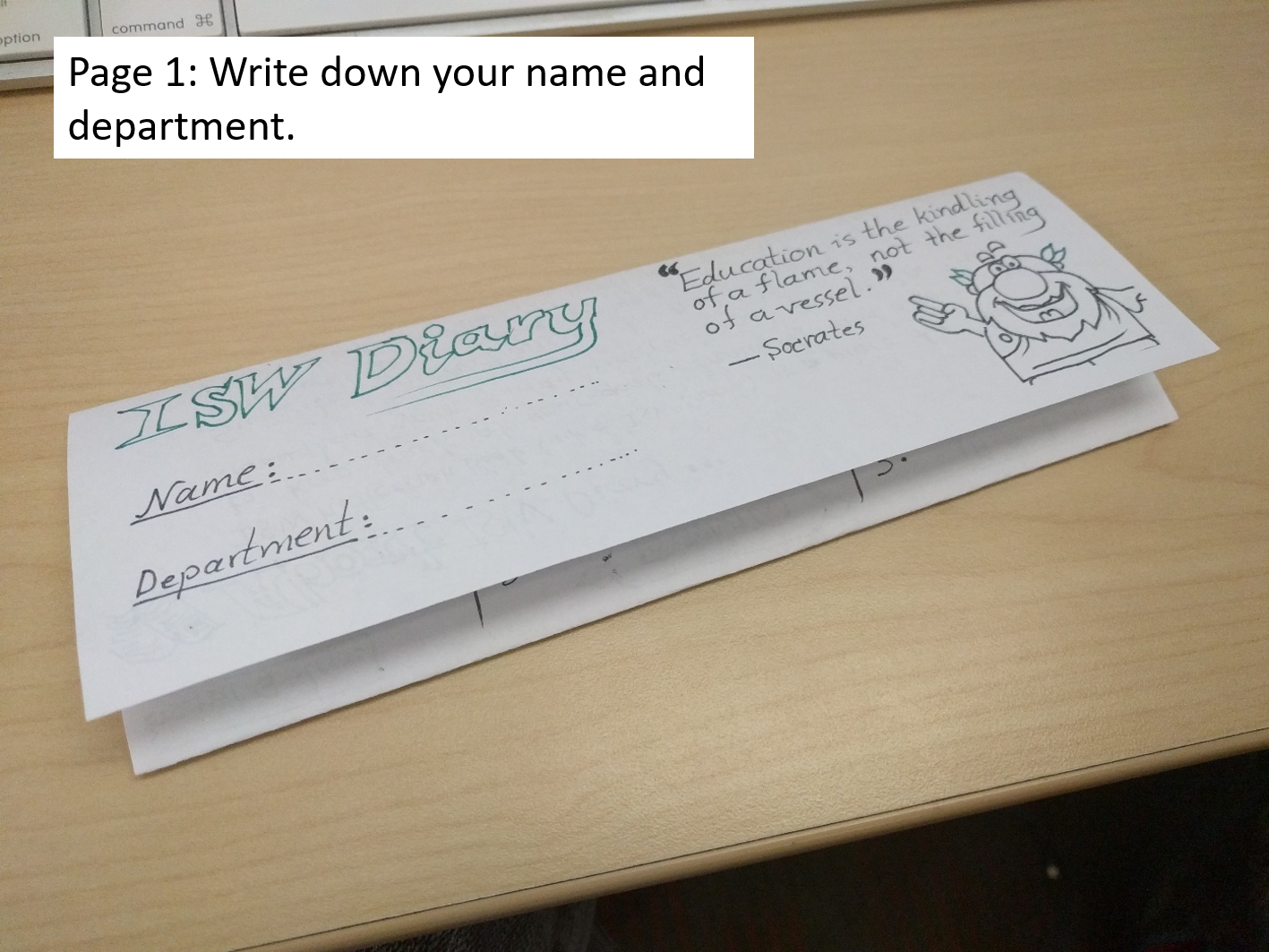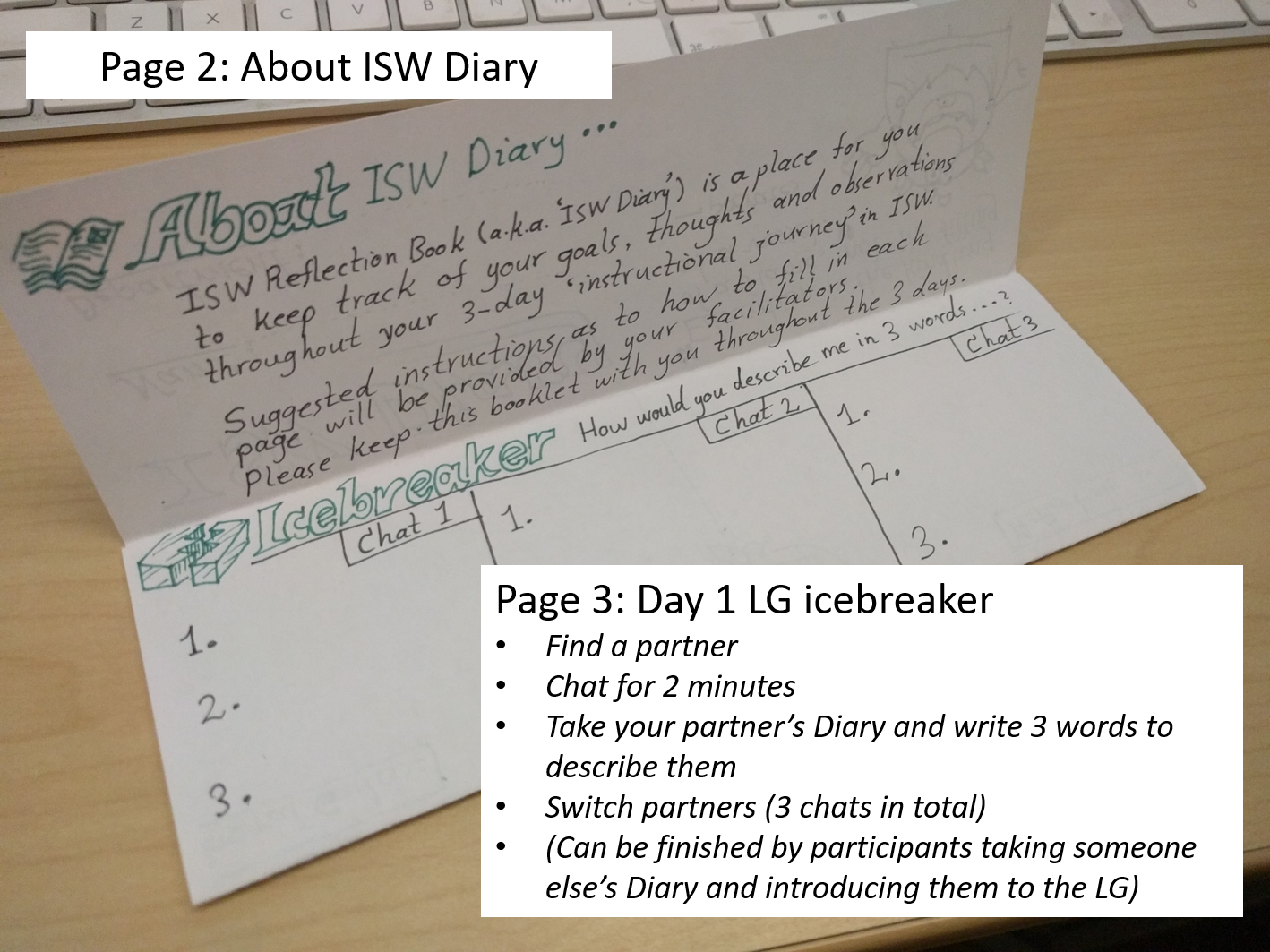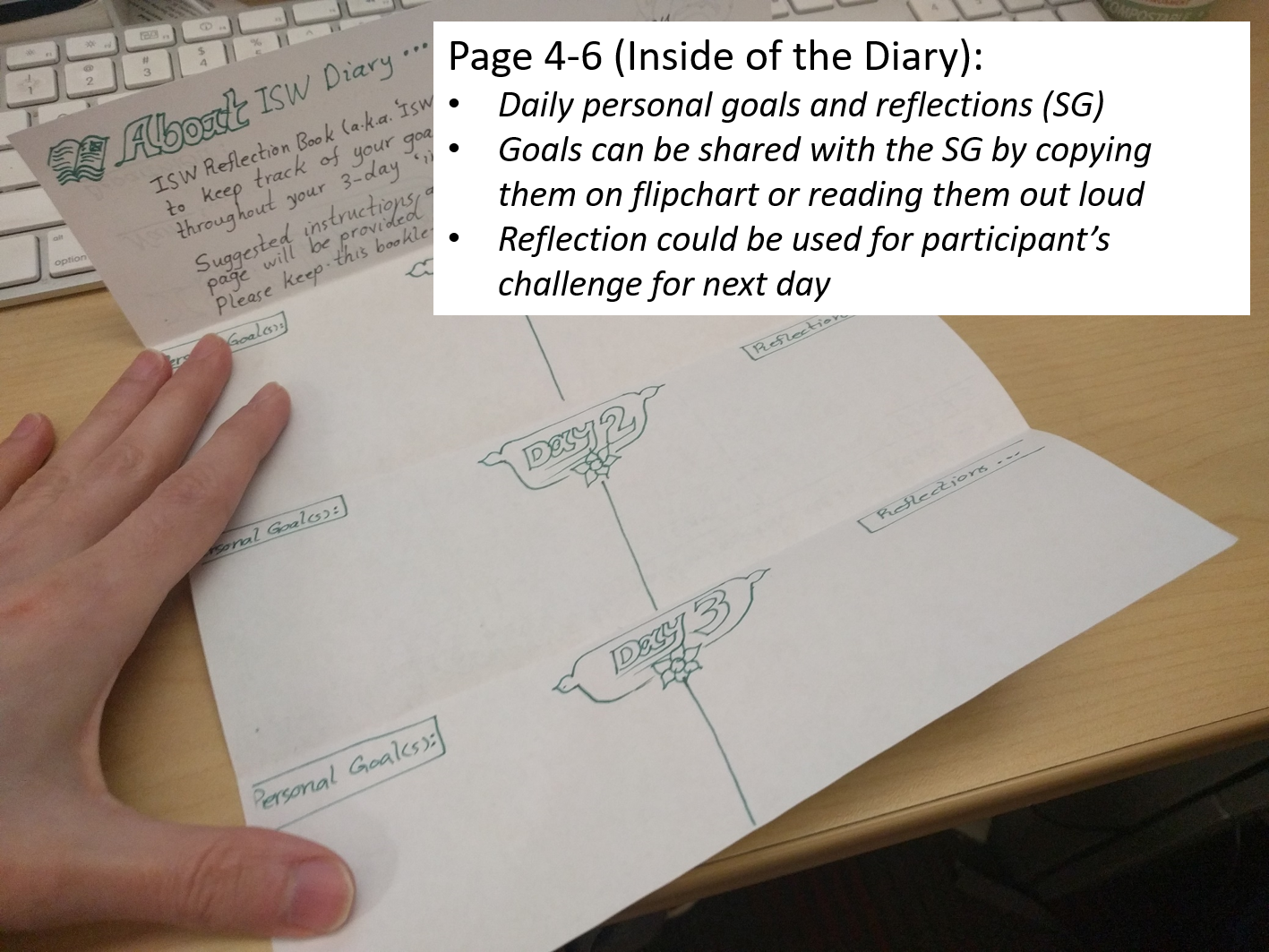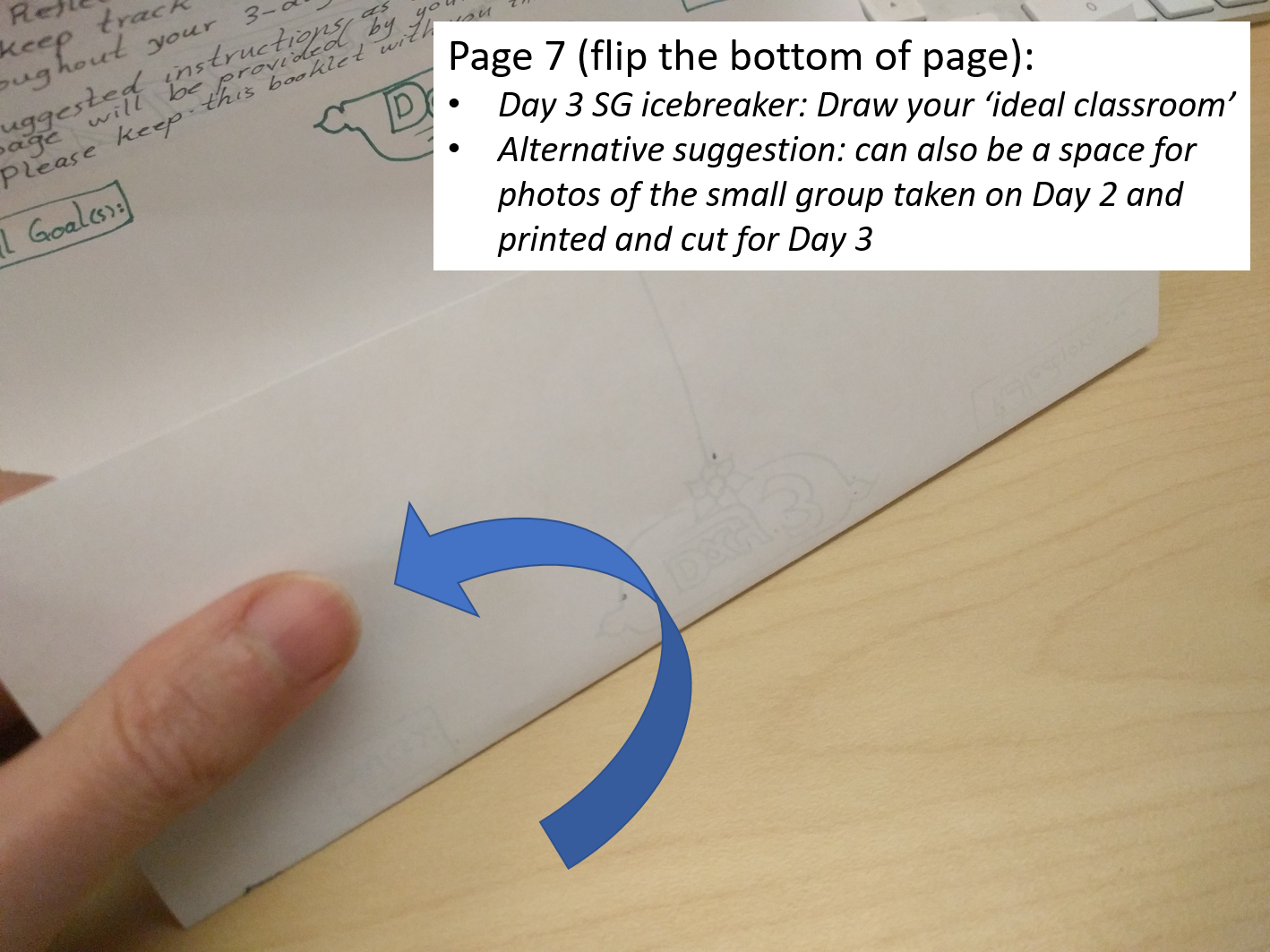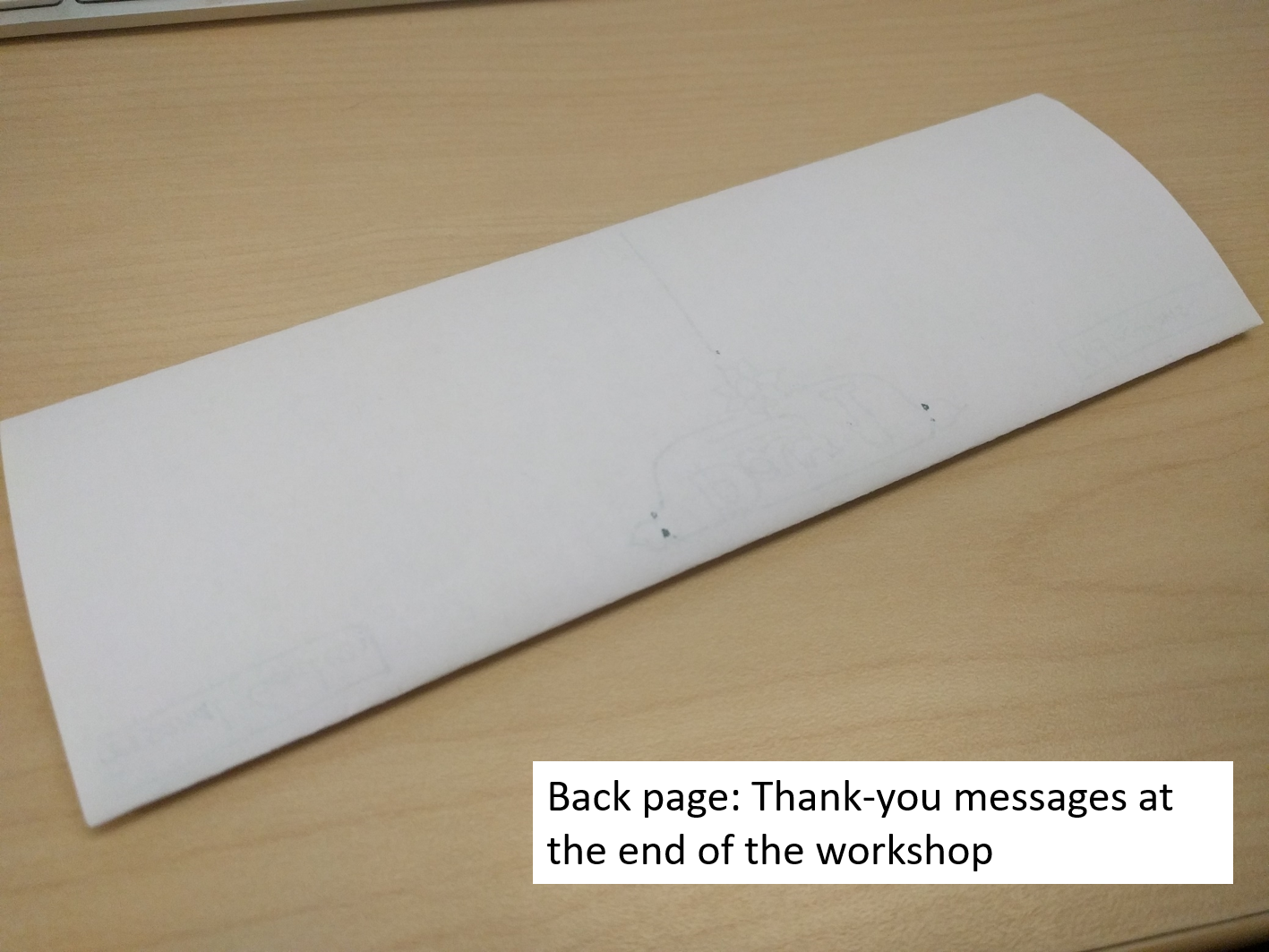Here is a variation of ISW reflection booklet I have tried: ISW Diary (reflection book)
The idea is to have a compact, portable and accessible booklet that serves a variety of functions throughout the ISW, and can be a memorable personal record of a participant’s growth over the 3 days. ISW Diary is handed to the participant at the beginning of Day 1 icebreaker and captures their journey through their workshop by recording:
- Their very first interactions with other participants in Day 1 Large Group icebreaker,
- Their daily personal goals and reflections for the Small Groups,
- Their creative expression of what they see as an ‘ideal’ classroom (Day 3 Small Group icebreaker), and finally,
- Their thank-you messages at the end of Day 3.
The pictures below demonstrate how the booklet is folded and used. This particular version is designed for a specific Day 1 Large Group icebreaker and Day 3 Small Group icebreaker (details explained below on the pictures). Please feel free to modify and improve it to include different cool ideas you might have!
